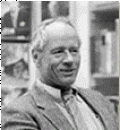A British schoolboy sees the quiet English countryside come alive with excitement toward the end of 1943 when …
A soldier remembers the freezing, fearful retreat down the Korean Peninsula after the Chinese armies smashed across the border
THERE ARE places on this globe to which history can point and say of a people, a nation, or an empire: “This was their high-water mark.
A veteran news correspondent recalls his days as a spotter plane pilot
The idea is simple and sound and goes back at least to the American Civil War: to direct artillery fire intelligently, the higher you are above the target, the better. At ground level it’s difficult to tell just how far short or long your shells are falling.
In the Meuse-Argonne, this backwoods pacifist did what Marshal Foch saw as “the greatest thing accomplished by any private’ soldier of all the armies of Europe.”
Pershing called him “the greatest civilian soldier” of World War I. Foch described his exploit in the Argonne as “the greatest thing accomplished by any private soldier of all the armies of Europe.”
An insider’s account of a startling— and still controversial—investigation of the Allied bombing of Germany
After a varied career as a soldier, statesman, diplomat, and presidential adviser, Taylor wants to known as someone who “always did his damndest.”
A trooper’s firsthand account of an adventure with the
Indian-fighting army in the American Southwest
In the early summer of 1872, Kiowa or Comanche Indians killed and scalped two white ranchers to steal their sixteen-shot Henry rifles.
On the morning of March 6,1836, a band of 187 Texas revolutionaries died at the hands of some three thousand Mexican troops within the crumbling pile of stones called the Alamo.
What’s Happened to the Long Gray Line
No monument or institution has more power to stir the patriotic emotions of Americans, or evokes more poignintly the martial virtues of self-sacrifice and discipline, than the United States Military Academy at West Point. In the view of General George S.
“For This Challenge, I Had Come Three Thousand Miles and Thirty-six Years of My Life”
The doughboys numbered only 550 men -- the remnants of four battalions -- and were surrounded by Germans. Then they were given the order to attack.
In the early fall of 1918 five hundred American infantrymen were cut off from their regiment and surrounded by Germans during five days of fighting in the Argonne Forest.
A Volunteer’s Eyewitness Account of the War With Spain
A decade ago a serious recognition of American Indian painters was rare indeed, for the simple reason that few art critics considered that there was anything about Indian painting worth knowing.
How the Generals Viewed the Indians
The white man’s peace at Appomattox in 1865 meant war for the Plains Indians.
Caught between two cultures, a young Sioux sought to make himself a hero—by killing an army officer
On January 8, 1891, newspapers throughout the United States headlined a tragic event in the Indian troubles rocking the Sioux reservations of South Dakota.
Army newspapers in World Wars I and II were unofficial, informal, and more than the top brass could handle
In the summer of the year 1944, in a time of world war that is already history to my children’s generation but remains vividly personal to mine as a moment of (in retrospect) astonishing simplicity and idealism, I found myself pointing a jeep in the direction
Eisenhower dreamed of serving under Patton, but history reversed their roles. Their stormy association dramatically shaped the Allied assault on the Third Reich.
A Negro cavalry regiment was John J. Pershing’s “home” in the service. From it came his nickname, and he never lost his affection for—or failed to champion—the valorous colored troopers he led.
An eyewitness recreates a wonderful, wacky day in August, 1944, when Hemingway, a handful of other Americans, and a señorita named Elena helped rekindle the City of Light. Champagne ran in rivers, and the squeals inside the tanks were not from grit in the bogie wheels.
Editor's Note: General "Slam" Marshall served in both world wars and was the Army’s chief historian in the European theater at the time of the events related here.
As the debate about rescuing them droned on and on, Lieutenant Greely’s men were dying one by one
Chief Washakie earned his battle scars in the service of the Great White Father, who—for once at least—kept faith with an Indian





